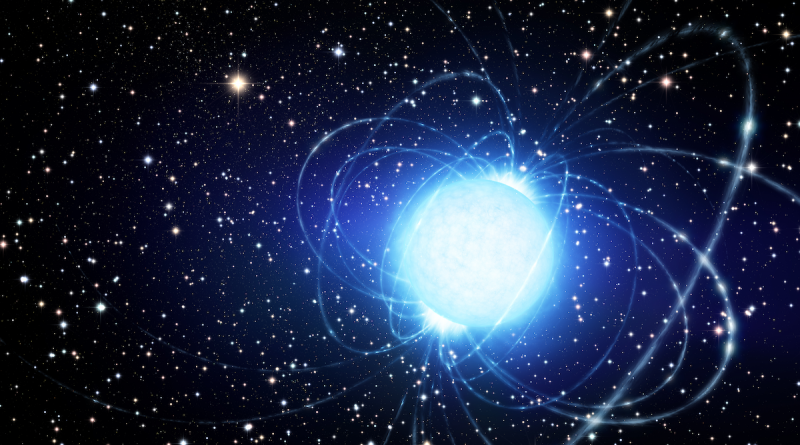Neutron stars: A cosmic gold mine
[ad_1]
Missing puzzle pieces
Despite their ability to tell us about the universe around us, there’s plenty researchers don’t understand about neutron stars themselves.
For starters, we don’t even have a close-up image of one. In 2019, the world was taken by storm when the Earth-spanning Event Horizon Telescope released the first image of a black hole’s shadow. Its target was the solar system-sized supermassive black hole at the heart of M87, which lies 54 million light-years away. But even though the nearest neutron star, RX J185635-3754, is only 200 light-years distant — significantly closer than M87 — it’s still too tiny to get an up-close image of with our current telescopes. “Neutron stars are just 10 to 15 kilometers [in diameter] no matter what, so it’s very hard to image such an object,” says Safi-Harb.
Scientists also have no idea what neutron stars’ interiors look like. That’s because physics predicts that deep inside the cores of neutron stars, the pressure exerted by gravity is too strong even for degenerate neutrons to withstand.
Neutron stars, like normal stars, are composed of layers. It’s easiest to think of them as consisting entirely of neutrons, but that isn’t actually the case. Astronomers believe neutron stars have a thin layer of atmosphere composed of hydrogen and helium. Beneath that lies a thin layer of outer crust — less than an inch thick — containing electrons unattached to a nucleus and atomic nuclei. In the inner crust, those electrons and nuclei become packed together. Some of the electrons combine with protons in lighter nuclei to make neutrons, while heavier atomic nuclei are spared. The outer core is where the neutron-rich environment begins. And beyond that is the inner core, whose composition physicists can only guess at.
“Once you get to the core of the neutron star, something has changed there. The density there is too high for this [neutron degeneracy pressure] picture [as we understand it],” says Kaspi. Some theories point to pressure from quarks — the particles that make up protons and neutrons — as the force holding up the inner core. Alternatively, a new particle might be responsible. Figuring out exactly which model holds up requires more data, however.
One way to rule out some of those models is to find more massive neutron stars. “For every model, there is some maximum mass above which it collapses into a black hole,” says Kaspi. And astronomers don’t quite know yet where the boundary between black holes and neutron stars lies. The most massive neutron star, PSR J0740+6620, is 2.1 solar masses, whereas the smallest black hole found, dubbed the Unicorn, weighs in at 3 solar masses.
In 2017, astronauts deployed the Neutron star Interior Composition Explorer (NICER) on to the International Space Station. NICER is the first dedicated neutron star mission and is therefore, according to Safi-Harb, “the best experiment to address the question [of what is at the heart of a neutron star].”
Understanding what’s going on at the core of a neutron star would also help explain what’s going on outside as well — namely, with its magnetic field. Originally, theorists believed that the magnetic fields around neutron stars were mostly dipoles, with the north and south sides emerging from opposite sides of the object. But recent observations have revealed that they aren’t that simple. Take the pulsar J0030+0451, which was observed by NICER in 2019. Based on those observations, simulations predict the possibility of two or even three separate magnetic fields emerging from the southern hemisphere of the object alone.
Though mysteries abound when it comes to neutron stars, astronomy is entering a golden era. And thanks to the LIGO/Virgo collaborations, researchers have a new tool in gravitational waves to study the cosmos with. LIGO has managed to capture just two binary neutron star mergers, but scientists are hopeful the observatory will discover more in the coming years. “There are a lot of big telescopes being built across the electromagnetic spectrum,” says Safi-Harb. “It is the synergy of all these telescopes together with gravitational waves that I’m most excited about, because there will be room for lots of discoveries and surprises that we didn’t even anticipate.”
And with each new neutron star discovered, astronomers are learning more about these compact objects, including that the neat categories they expected are more like a sliding spectrum. Some magnetars have been observed to exhibit more pulsarlike behavior and vice versa. Even stranger, the Chandra X-ray Observatory discovered what researchers are calling anti-magnetars. They appear to be neutron stars with uncharacteristically low magnetic fields. In the past decade, about two dozen of these strange objects have been found at the heart of supernovae remnants.
“This is why I do this kind of astronomy,” says Kaspi. “Neutron stars are just really cool.”
[ad_2]
Original Post


337 thoughts on “Neutron stars: A cosmic gold mine”